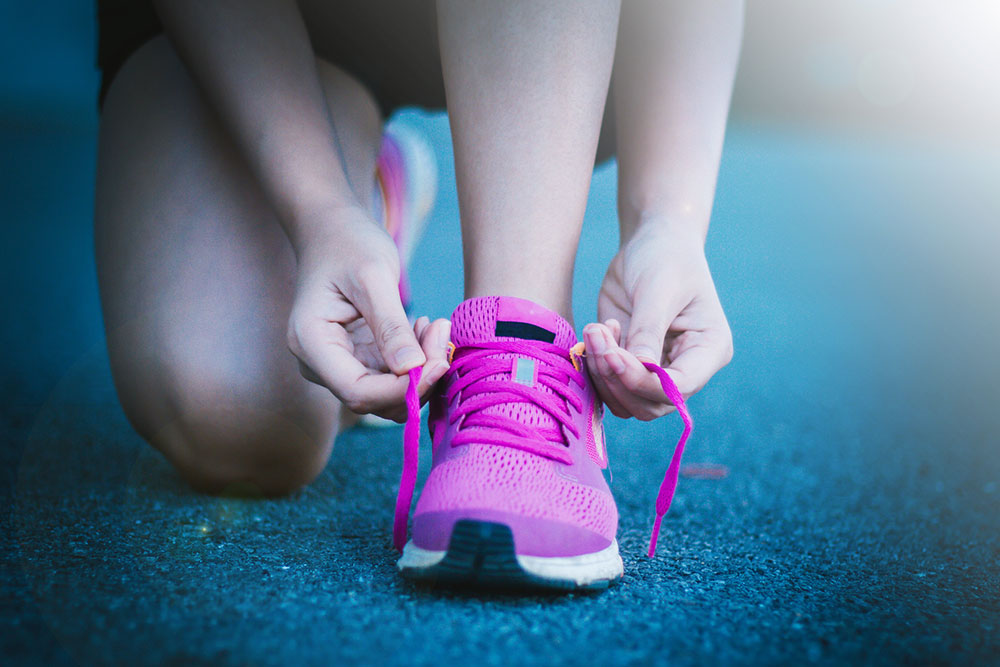How to choose the right pair of running shoes

Running shoes are available in multiple designs and fabrics on the market nowadays. Choosing the right one can be an overwhelming task as there are several contributing factors to consider, such as the purchase objective, budget, particular brand, specific style, and more. It is important to analyze all aspects before making a purchase. In this regard, here is a guide that can help one pick the right pair of running shoes according to the requirements.
Running surface
While deciding which shoes to purchase for running, it’s important to consider the location of the training. If one’s training on the pavement, road shoes are the best choice. They provide more cushioning than other types of running shoes, such as trail runners or lightweight race shoes, which can help minimize the risk of injury and provide better shock absorption for one’s feet and knees.
If the training is being done on soft and muddy trails, then trail shoes are the perfect fit. These shoes offer great ankle support and better grip, making it more comfortable to run. They also make finding grip easier and help prevent falling on uneven trails.
In addition to these two options, there is also a hybrid option that combines cushioning and grip for a balanced experience on both pavement and muddy trails.
Gait analysis
It may seem like an unnecessary step, but it is actually an essential one when choosing the right pair of running shoes for one’s gait. Expert fitters use AI to understand how a runner’s foot works. They study the degree to which the foot naturally rolls inward during motion and observe the foot’s angle when it makes contact with the ground. This data helps to analyze the runner’s gait, which is then useful in recommending the best running shoe for them.
Insoles
Insoles play an important role in how a shoe feels and fits. They can be used to customize the fit of the shoe for some runners, and can provide additional comfort. Insoles can provide comfort across the ball of the foot, the heel, and the arch. This can help reduce discomfort such as shin splints, hot spots, slipping, and blisters. Insoles are designed to match the contours of the foot for maximum comfort.
Right socks
Socks are not just a fashion accessory; they make a big difference in the comfort and performance of running shoes. The thickness of socks, in fact, is a game changer when buying shoes. It is always recommended to wear the socks one intends to run in when trying on shoes to get an accurate feel for the fit. In fact, there are some technical running socks available that are specifically designed to provide arch support and extra padding across the ball of the foot. They also extend the padding to the toes and heel for better protection. Cotton socks are not recommended for running, even though they may seem extremely comfortable otherwise when worn daily at home. This material can absorb moisture and lead to hot spots, calluses, and painful blisters due to constant friction and heat on the feet.
Brand specifics
When it comes to running shoes, it’s important to prioritize function over brand. While some brands may be well-known for their running-specific features, it’s important to choose a shoe that meets individual needs rather than simply opting for a trendy brand name. Therefore, it’s advisable to look for shoes that are specifically designed for running and have the required functions rather than focusing on the brand name.
Types of running shoes
There are various types of running shoes available, and some of the popular options are listed below:
- Cushion running shoe
These shoes are ideal for runners who have a tendency to underpronate. Underpronation occurs when the feet do not roll inward or outward enough while running. This condition can lead to discomfort, pain, and injuries. The cushioning provided by these shoes helps to correct this condition, promoting a healthier, more comfortable gait when running. By choosing these shoes, runners can reduce the risk of injury and enjoy a more comfortable running experience. - Stability running shoes
These shoes are specifically designed to offer not only cushioning but also medial foot support and motion control. They work by limiting any unnecessary movement in the foot and ankle, which can cause discomfort or even injury. By providing reliable support and control, these shoes help to ensure a comfortable and safe experience, especially during running activities. - Lightweight running shoes
As the name implies, lightweight shoes are typically more flexible than other types of shoes. They are well-known for their minimalist design, which feels incredibly light on the feet while still providing adequate cushioning for running. These lightweight shoes are particularly beneficial for individuals who experience fatigue or pain after a run, as they provide excellent cushioning for the feet.
Selecting the appropriate running shoes can be an easy process if one knows the essential aspects of buying a pair. It is recommended to seek the guidance of a professional fitter while purchasing shoes to ensure that the health of the foot and knee is not compromised and one makes the right decision.









